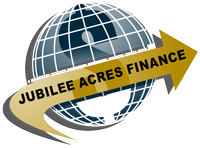Understanding the Role of Internal Linking in SEO

The Future of Electric Car Insurance in Singapore
December 23, 2024IPTV and the New Era of Sports Viewing in the UK
January 3, 2025Understanding the Role of Internal Linking in SEO
Search engine optimization (SEO) extends beyond content creation and external backlinks. One often overlooked but highly impactful aspect is internal linking, which involves connecting different pages within the same website. When done correctly, internal linking not only enhances user experience but also assists search engines in understanding your site’s structure, distributing link equity, and prioritizing key pages. This article outlines a detailed approach to building an SEO-friendly site architecture using internal linking, ensuring that your website is both user-friendly and search engine optimized.
Understanding the Role of Internal Linking in SEO
Internal linking is the practice of linking one page of a website to another within the same domain. Unlike backlinks from external websites, internal links are entirely within your control, making them a critical aspect of on-page SEO. They serve three main purposes:
- Improved Crawlability: Search engines use bots to crawl websites, following links to discover and index content. Internal links help these bots navigate your site efficiently, ensuring all important pages are indexed.
- Link Equity Distribution: Also known as “link juice,” link equity refers to the value passed from one page to another through hyperlinks. Internal links distribute this equity strategically, boosting the authority of specific pages.
- Enhanced User Navigation: Thoughtful internal linking guides users through relevant content, increasing engagement and reducing bounce rates.
Table: Comparison of Internal Linking vs. Backlinking
| Aspect | Internal Linking | Backlinking |
| Control | Full control over placement | Relies on external websites |
| Purpose | Improve site structure and navigation | Build domain authority |
| Influence on SEO | High when optimized | High, often dependent on domain quality |
| Cost | Minimal, part of site design | Can involve outreach and expenses |
Building SEO-Friendly Site Architecture: Key Principles
1. Design a Clear Hierarchy
A well-structured website hierarchy organizes content into categories, subcategories, and individual pages. This structure simplifies navigation for users and search engines alike.
Practical Steps:
- Begin with a homepage at the top, followed by primary category pages, and then individual pages under each category.
- Use breadcrumb navigation to reinforce hierarchy and provide context for users.
Example:
For an e-commerce site selling electronics:
- Homepage → Categories (e.g., Laptops, Smartphones) → Subcategories (e.g., Gaming Laptops) → Product Pages (e.g., ASUS ROG Zephyrus G15)
2. Use Contextual Links
Contextual internal links, embedded within the content, are more impactful than those in footers or sidebars. These links provide additional value by directing users to related, deeper content.
Best Practices:
- Link from high-performing pages to those needing more visibility.
- Use descriptive anchor text that incorporates keywords naturally.
3. Avoid Orphan Pages
Orphan pages are pages without any internal links pointing to them, making them difficult for search engines to find and index.
Solutions:
- Regularly audit your site for orphan pages.
- Integrate links to these pages in existing content or menus.
Best Practices for Internal Link Structures
1. Optimize Anchor Text
Anchor text—the clickable text of a hyperlink—should be descriptive and relevant. Avoid using generic terms like “click here” or “read more.”
Example:
Instead of saying, “For more information, [click here],” write, “Explore our services for tailored solutions.”
2. Limit the Number of Links Per Page
While internal linking is beneficial, excessive links can dilute their value and overwhelm users. Focus on quality over quantity.
Guidelines:
- Limit to 100 internal links per page, including navigation links.
- Prioritize links to high-value pages.
3. Regularly Audit Your Internal Links
Website updates can lead to broken links or irrelevant internal links, negatively impacting user experience and SEO. Conduct periodic audits to ensure all links remain functional and relevant.
Tools for Auditing:
- Google Search Console: Identify crawl errors and broken links.
- Screaming Frog: Analyze link structures and pinpoint issues.
Case Study: Effective Internal Linking in Action
A mid-sized e-commerce website implemented a strategic internal linking framework, resulting in a 25% increase in organic traffic within six months. Key changes included:
- Revamping site hierarchy for clarity.
- Adding contextual links to underperforming product pages.
- Regular audits to fix broken links and update outdated ones.
Advanced Strategies for Internal Linking
1. Leverage Pillar and Cluster Models
The pillar-cluster model involves creating a central “pillar” page covering a broad topic, surrounded by “cluster” pages focusing on subtopics. Internal links connect these pages, reinforcing topical authority.
Example:
For an SEO blog:
- Pillar Page: Comprehensive Guide to SEO
- Cluster Pages: On-Page SEO, Technical SEO, Keyword Research, Link Building
Table: Benefits of the Pillar-Cluster Model
| Benefit | Impact on SEO |
| Improved topical authority | Signals expertise to search engines |
| Enhanced user experience | Guides readers to detailed content |
| Boosted page rankings | Strengthens link equity distribution |
2. Use Internal Links for Call-to-Actions (CTAs)
Internal links in CTAs encourage users to explore additional pages or take specific actions.
Example:
A blog post on website optimization could end with: “Learn how we can optimize your website for better rankings.”
3. Implement Schema Markup
Schema markup enhances search engine understanding of your site’s structure, complementing internal linking strategies. Breadcrumb schema, for instance, helps display your hierarchy in search results.
Example of Breadcrumb Schema Code:
<script type="application/ld+json">
{
"@context": "https://schema.org",
"@type": "BreadcrumbList",
"itemListElement": [
{
"@type": "ListItem",
"position": 1,
"name": "Home",
"item": "https://example.com/"
},
{
"@type": "ListItem",
"position": 2,
"name": "SEO Services",
"item": "https://example.com/seo-services/"
}
]
}
</script>
Closing Thoughts
Internal linking is a cornerstone of SEO-friendly site architecture, directly influencing how search engines and users interact with your website. By designing a clear hierarchy, integrating contextual links, avoiding orphan pages, and regularly auditing your link structure, you can optimize your website for long-term success. Additionally, advanced strategies like the pillar-cluster model and schema markup can further enhance your site’s performance.
For businesses aiming to achieve competitive SEO results, consider collaborating with experts like Agence SEO Zenith. Their expertise in creating tailored strategies can transform your website into a high-performing digital asset.

